The adjective “digital” seems to precede how we define most things we experience or interact with in our daily life, and art is no exception. Digital art is a fairly new concept, and yet so powerful. The first forms of digital art appeared in the 80s and it has its roots in early experimentation with digital tools in the 60s.
What is digital art, and what is its value? These types of artworks and techniques have had such a quick rise that their meaning keeps evolving at the same peace digital tools like AI open more doors to creativity and creation.
When we talk about digital art we talk about art pieces created with electronic devices and software, but these two little words carry a bigger meaning. This concept talks about the rapid evolution of art techniques, the accessibility to experiment with new mediums, and how all these factors intertwine. Now complex artworks can reach a global audience with just a few clicks. So, in order to understand what digital art is, first we have to dive into how it came to be.
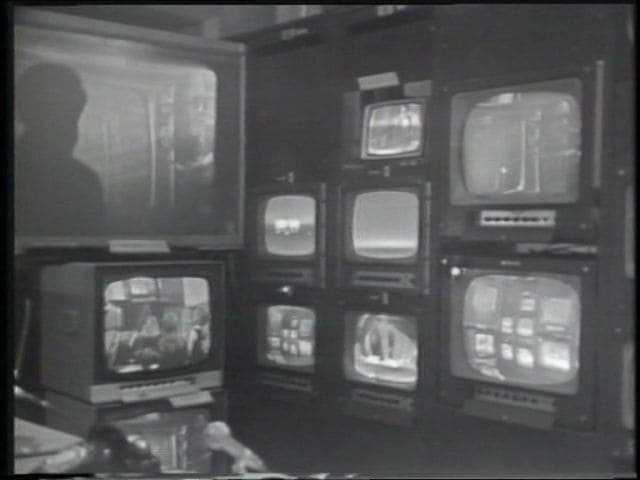
Allan Kaprow’s “Hello”, a “tele-happening” (1969).
Contents
The history of the ever-evolving concept of Digital Art
The artistic mind is eager to integrate new mediums into its creative process in order to portray its ideas, and the artist’s “toolbox” reflects the zeitgeist their creation captures. When access to computers and software became more common (way before the internet or a smartphone were considered necessities), the natural step for many creatives was to step up and explore the connection between art and technology and the endless opportunities it opened for artistic expression.
In the mid-1960’s the concept of “computer art” started buzzing inside the art community. Artists like Frieder Nake used their background in computer science to generate drawings with algorithms that could produce different layouts of shapes and elements to achieve artworks based on the nature of logic and chance. But what once was also called “new media art” was meant to expand beyond still images: by the end of the decade, artistic happenings found an outlet in it.
Digital art was meant to be interactive and multimedia. A first example of this notion can be seen in Allan Kaprow’s “Hello” (1969), a “tele-happening” that, in the pre-internet era, used interconnected television studios in different cities to allow participants to interact with each other in front of the camera, while Kaprow’s controlled the sound and visual aspects from a control room. This performative event not only questioned the unilaterality of the current mass media channels but foretold a future where mixed media and interactivity would be interconnected and immediate.
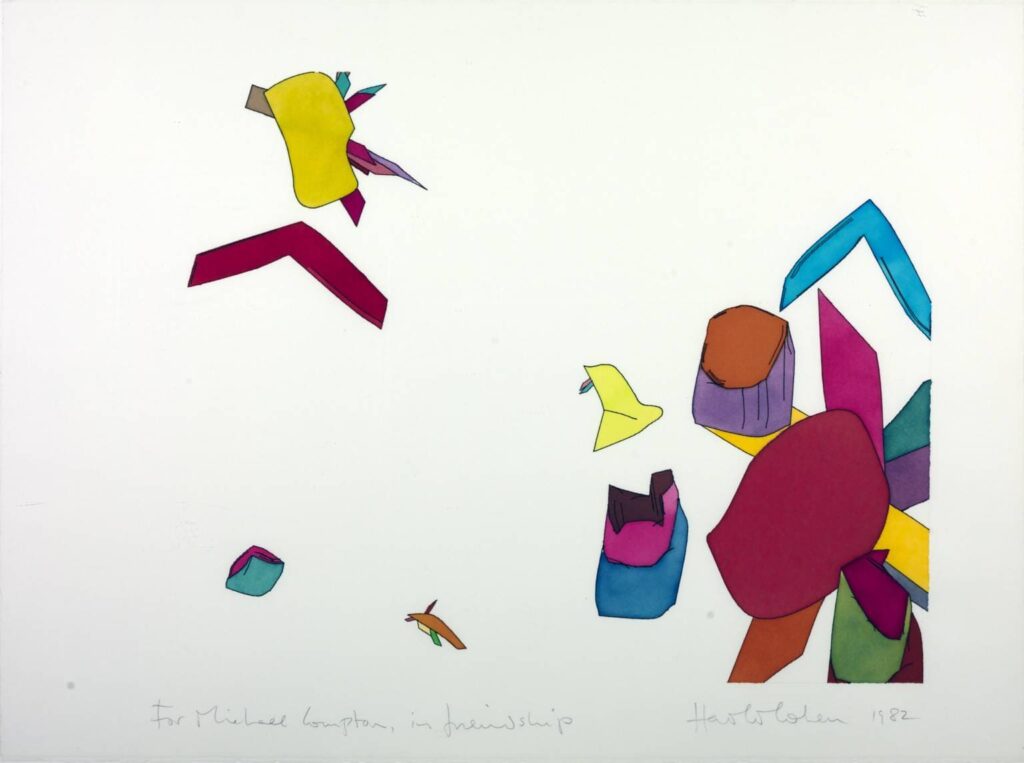
Harold Cohen’s Untitled Computer Drawing (1982).
By the early 1980’s the term “digital art” was coined and popularized by artist Harold Cohen, who worked with computer engineers to create a machine that is seen as the earliest form of painting software and artificial intelligence technology used today. AARON was the name of this robotic machinery that was programmed to create drawings on large paper sheets placed on the floor.
From the start Cohen highlighted that AARON was just a mechanism to channel his creative impulse, this translated in the beginning into abstract drawings and evolved to more organic shapes and the implementation of color. And yet today, this is seen by many as the genesis of AI art or art generated by Artificial Intelligence.
The ’90s brought one of the most important elements of digital art: accessibility. The internet and personal computers gave artists the freedom to easily experiment with emerging technologies. Anyone could scan a photograph and intervene it digitally, draw with software or edit graphics and audio into a video. Digital artworks now could take different formats and they all could be easily distributed and seen by others in this new digital realm.
This was also the decade where digital art made its way into site-specific installations and sculptural artworks. Pioneers like Maurizio Bolognini and Nam June Paik not only intertwined audio, video, and image into their works but made monitors, computers, and robotics a part of their pieces to outline something that we now take for granted: the digital world has physical components. This would eventually lead to the hybrid world we now live in.
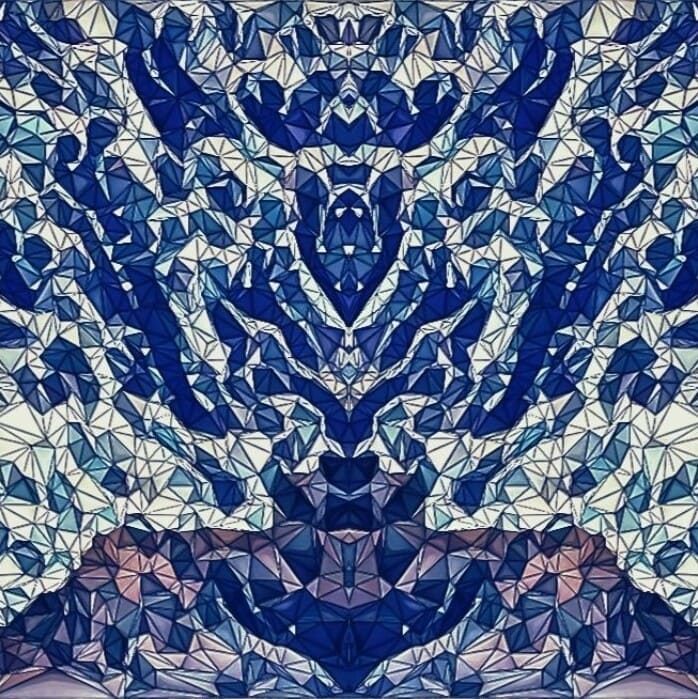
Wavy Mirror #1 by Mirrorrorrim.
What is digital art? Outlining a concept
Today digital art is not seen as a movement nor a label, it has an “anything goes” approach and an interactive component that makes it impossible to reduce it to a single format. Digital art demands the artist to know and master the traditional elements of art (shape, line, colors, form, space, and texture) while developing new skills like being proficient with editing software and tools like drawing tablets. The goal is to freely experiment with the available technological features to portray their unique point of view in the resulting art piece.
Yes, digital art refers to artworks created with different kinds of technologies, and that inevitably forces us to see it not as a single medium but as a wide spectrum of mediums that can result in artworks in different formats like illustrations, photography, animated graphics, GIFs, videos, augmented reality and artificial intelligence generated pieces.
And why is the mention of digital art still stirring up discussions in the art world? The boom of “Crypto art” has re-opened conversations about the value of digital art. To be clear, crypto art ≠ NFTs. The first one refers to digital art pieces that can only be acquired with cryptocurrencies, the latter to non-fungible tokens that can store the original format of digital artwork, along with a traceable certification of ownership, and even copyright and ownership clauses.
Digital Art has its own merit and value, it requires mastering certain techniques, creativity, and talent, like any other art form. If we look past the hype, the interest in NTFs tells us a lot about how new technologies can make art more accessible and create new ways to recognize the work of creators.
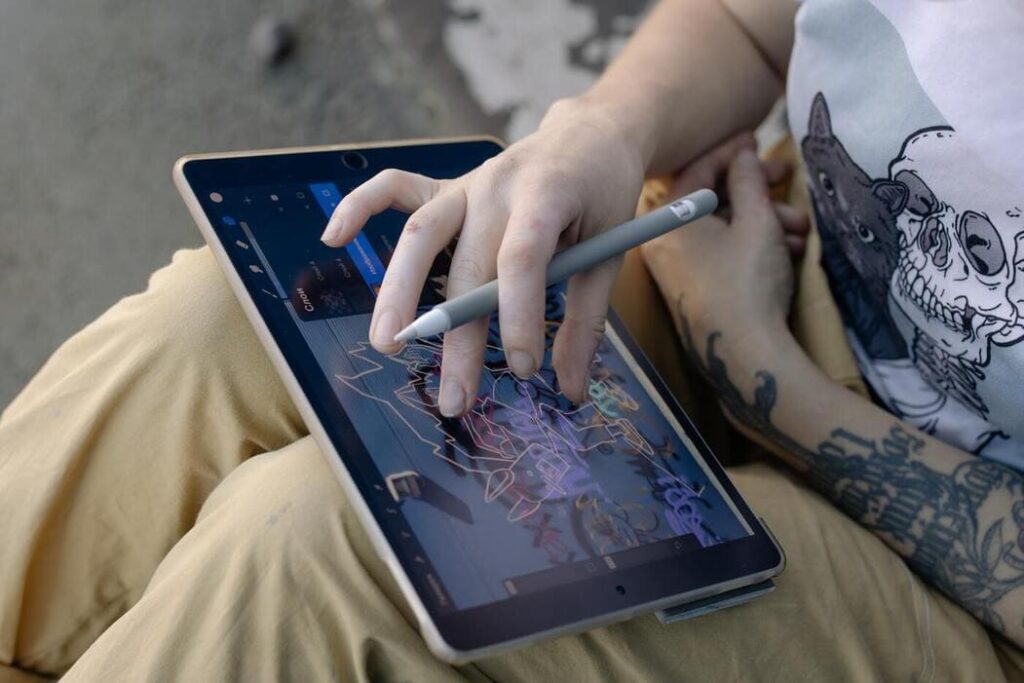
The new essential tools for artists? Drawing tablets, apps, and stylus pens.
What tools are needed to create digital art
The growth of digital art has changed how an artist’s studio looks like today: brushes, paints, and traditional canvases coexist with monitors, drawing pens, and an array of different software. For both beginners and seasoned artists, these are the essential tools for creating digital art pieces:
-Editing software and apps for image, video, and audio.
-Drawing tablets or drawing pads.
-Stylus pen and different pen nibs.
-3D painting and sculpting tools.
-Controller-based brushes used to create your own brushes and strokes.
-Animation software for 2D and 3D animations, as well as motion graphics and stop-motion.
-AR and VR creation tools.
-Vector graphics editor.
-Color wheel plug-ins: to sample colors and have an easy-to-reach saved-up pallette.
-3D Modeling app or software: to visualize angles as well as light and shadow directions.
-Perspective tools.
-High-resolution art printers for general printmaking.
In a digital artist’s workstation, certain hardware is essential like a color-accurate monitor, monitor calibration devices, a good CPU, and a high-quality keyboard and mouse.
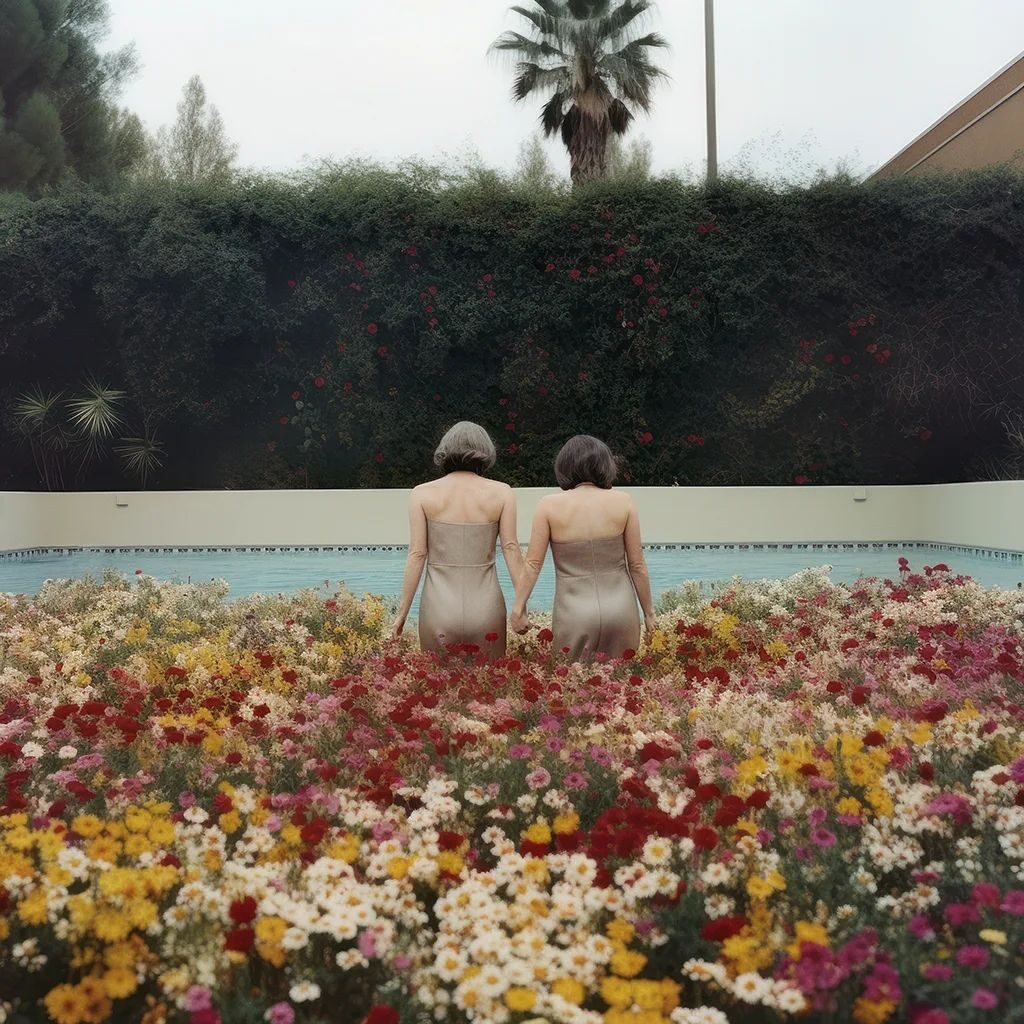
The Rise of AI Art: a new frontier for modern artists
AI tools seem to be everywhere these days. ChatGPT and the use of prompts to generate text content quickly turned into an everyday task. The art world has been shaken up by the concept of AI-generated Art, but before diving into what this is and how it challenges common concepts around artworks, we need to understand what AI is.
Artificial Intelligence is a term coined by computer scientist John McCarthy in 1955, to refer to “learning and thinking” done by machines. Today this concept has evolved to compass all types of creational processes that involve machine learning algorithms to generate different kinds of content, from images, to text, videos, and audios.
There are three common ways in which AI works or is used. There are AI algorithms that can produce images by taking information from big databases of human-created pictures through a prompt. Another way to generate images with AI is by feeding the algorithm with particular graphic content and then using prompts to manipulate it and generate new works. And the last one is a mix of the previous ones, feeding an image (by the artists or by others) to the AI and giving it a text prompt to modify it, generating a brand-new picture.
What might seem like a new trend of AI-generated art, is actually the result of a few years of experimentation with these procedures. The discussion around the use of GANs (generated adversarial network) algorithms first arose in 2014. By the next year, Google had released Deepdream, its own experimental approach to AI-generated images.
Ganbreeder (now known as Artbreeder) was launched in 2018 using the same technology to modify or intervene existing images to create new ones. By 2021 Dall-E was open to the public, a system that enables any user to enter a text prompt to generate a particular image, and quickly Midjourney followed with a similar take on the generation of graphic renders.
This text-to-image AI technology has now been embraced by major digital image and video editors that offer an option to either create images from scratch through a prompt or to edit and generate parts of it.
So, what is AI art? It’s any type of artwork generated by algorithms that are either fed information or take it from existing digital databases. The algorithm is moved by human-created prompts to create a particular image.
Certainly, AI Art challenges basic concepts around art: from copyright to creativity, to the mere involvement of the human experience in the creation process. But just as it generates big and important debates, it also offers a new frontier for experimentation with digital tools for contemporary artists.
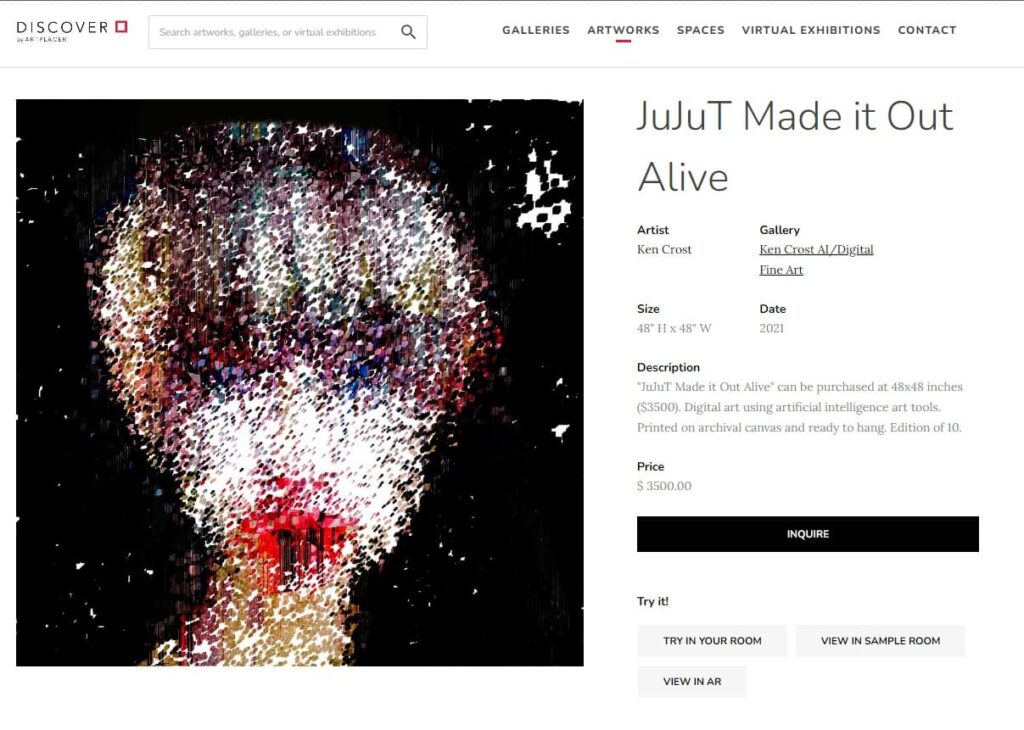
AI Art example JuJuT Made it Out Alive by Ken Crost as seen on ArtPlacer’s Discover page.
How to present, promote and sell digital art
Digital art presents endless opportunities but this new medium also has its challenges for artists, from developing new skills to facing questions like: “how can I share my digital art and reach a broader public?” or “how can I market and sell my digital artworks?”
ArtPlacer was built with the idea of solving these issues and giving artists a series of resources to present their digital artworks. Virtual Exhibitions bring the look and feel of in-situ galleries to the digital world. In a matter of minutes, you can select a 3D gallery space (from an art fair booth to a museum-like venue), place your digital artworks (paintings, photographs, videos, text, GIFs, and NFTs) and turn your latest collection into a proper digital art show. You can choose from our digital frame selection, and customize the space’s walls, floor and ceiling to enhance your pieces and capture your aesthetic.
After curating your virtual exhibition you can easily share it by link or host it on your professional website and make it available to a global audience. A big plus for those looking to build a successful art business are the “Buy” and “Inquiry” buttons that create a frictionless process for collectors that want to acquire your pieces.
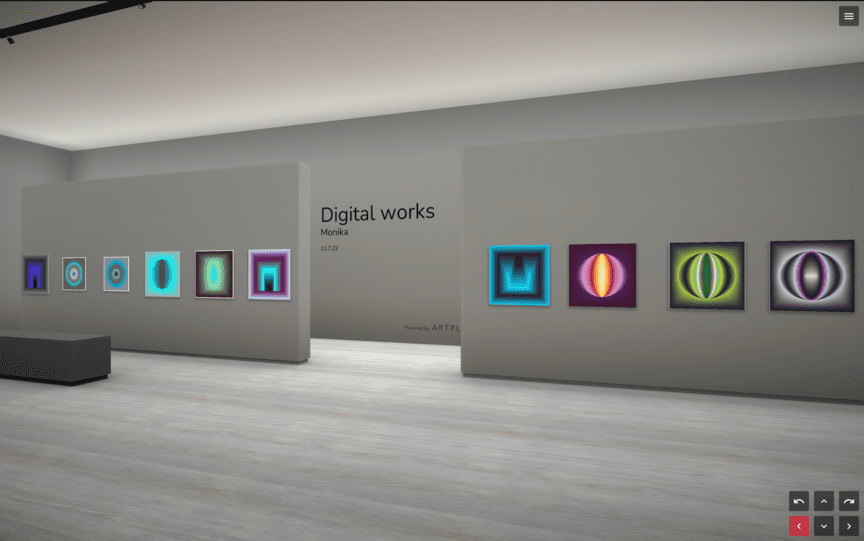
View of “Digital Works” art show by multimedia artist Monika Morgenstern created with ArtPlacer’s Virtual Exhibition feature.
With the idea of tapping into the creative possibilities of AR technology, ArtPlacer’s Augment Reality Widget was thought of as an approachable way to give anyone interested in your art a “try before you buy” experience, by allowing them to visualize your artwork on their walls through their preferred mobile device camera.
If you are considering turning your digital artwork into art prints, our Room Mockups are a helpful solution that helps your audience see how your creations would look in a physical space. You can easily “drag and drop” your art pieces into digital room mockups with different styles and customization options, to achieve social media-worthy images to promote your work, strengthen your online presence, and even give a more professional look to artwork descriptions on your website. Start ArtPlacer’s free trial now!
Now that you know what digital art is and how to share it with the world: take your preferred tools and play around with the endless possibilities of this art form.

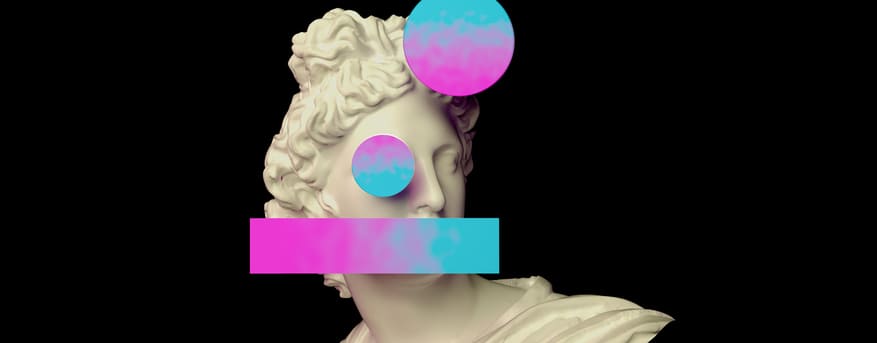
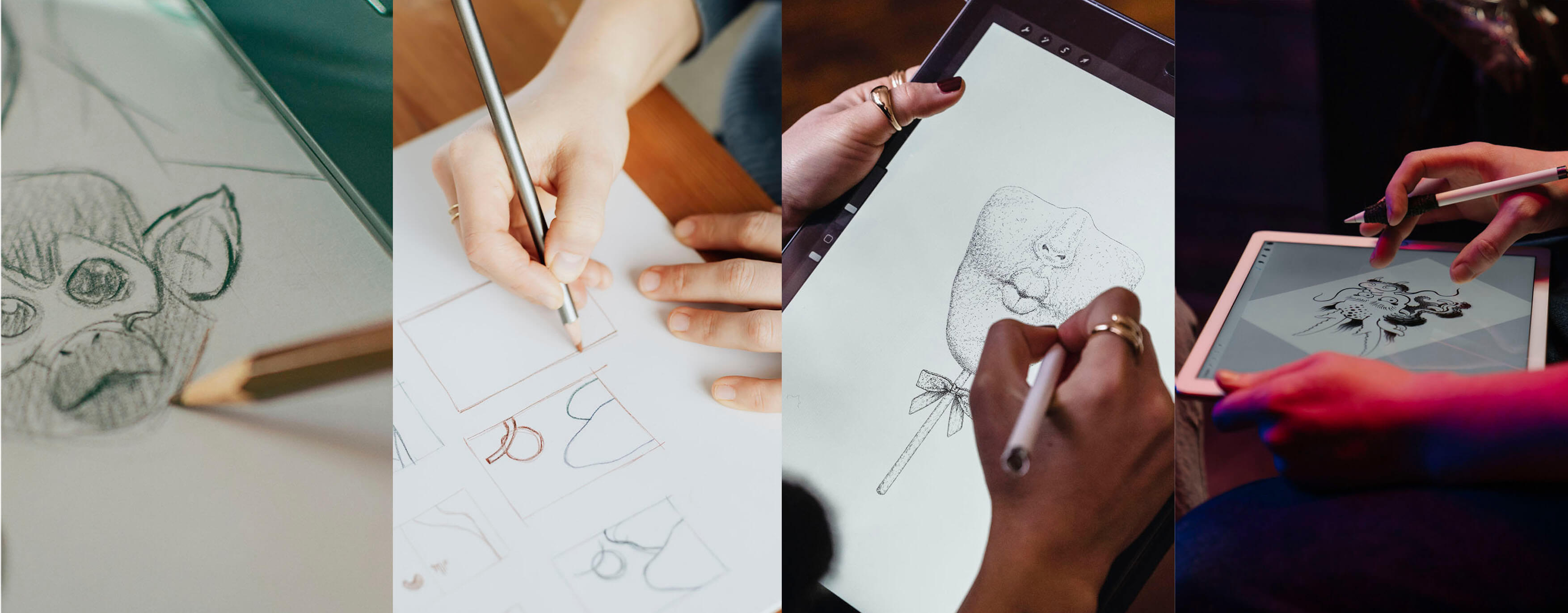
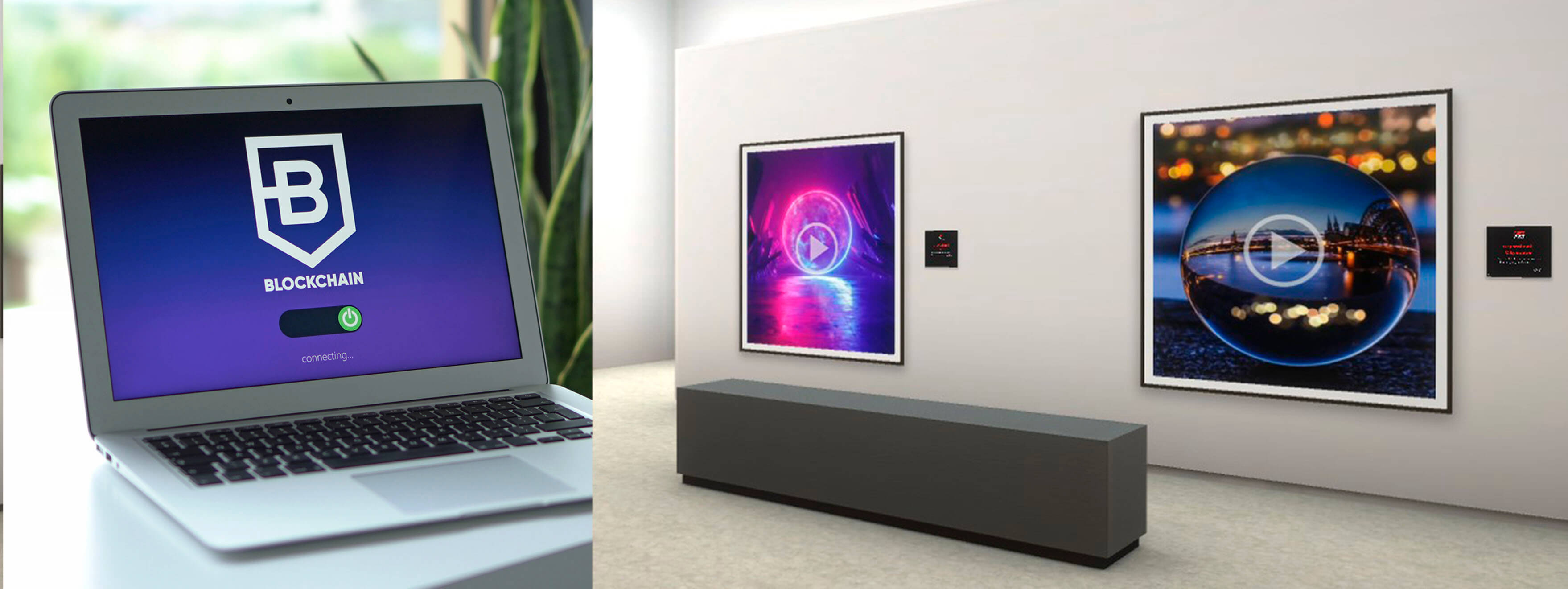
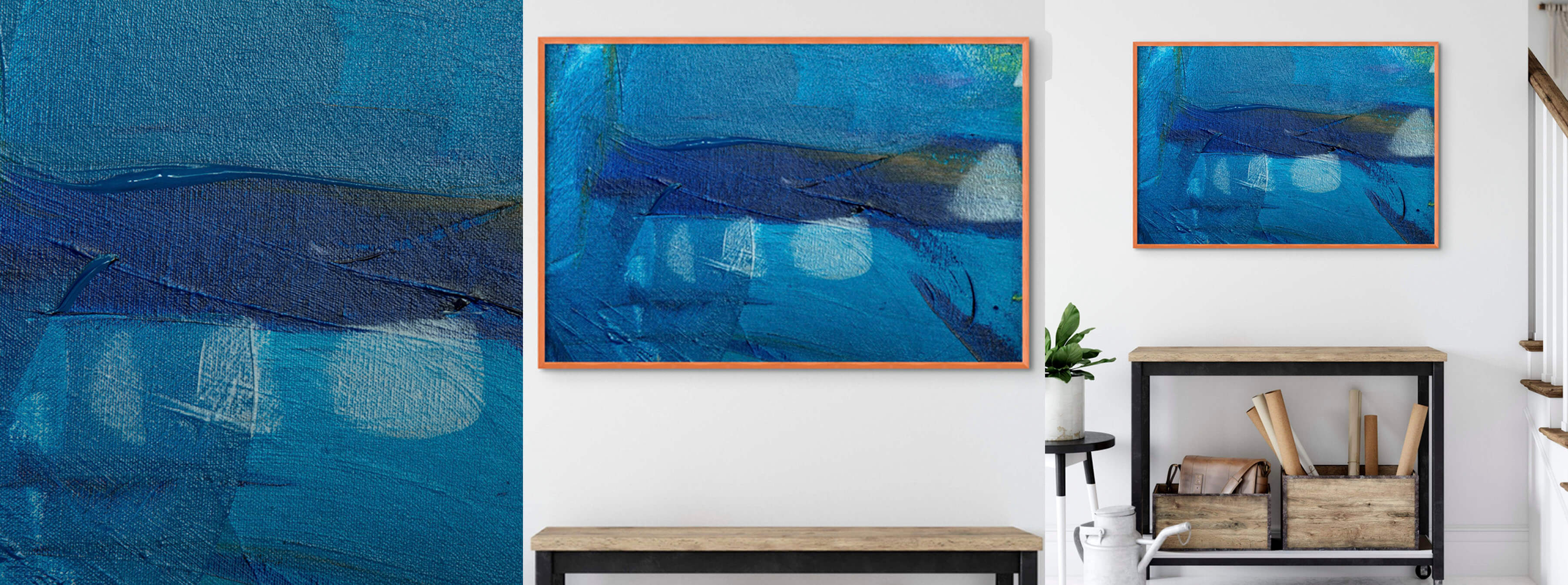
who is the author of this blog? i want to use some quotes fo my school project but i don’t know who to credit.
This is really interesting! Didn’t know digital art spanned all the way back to the late 1900s.